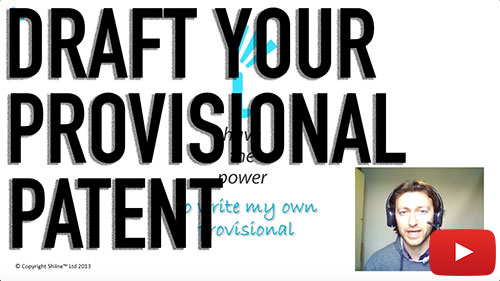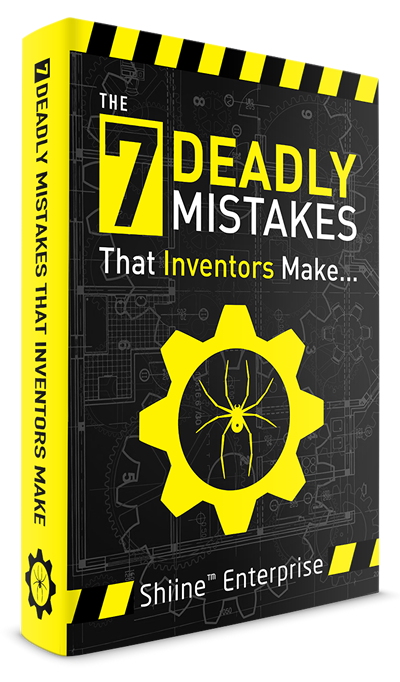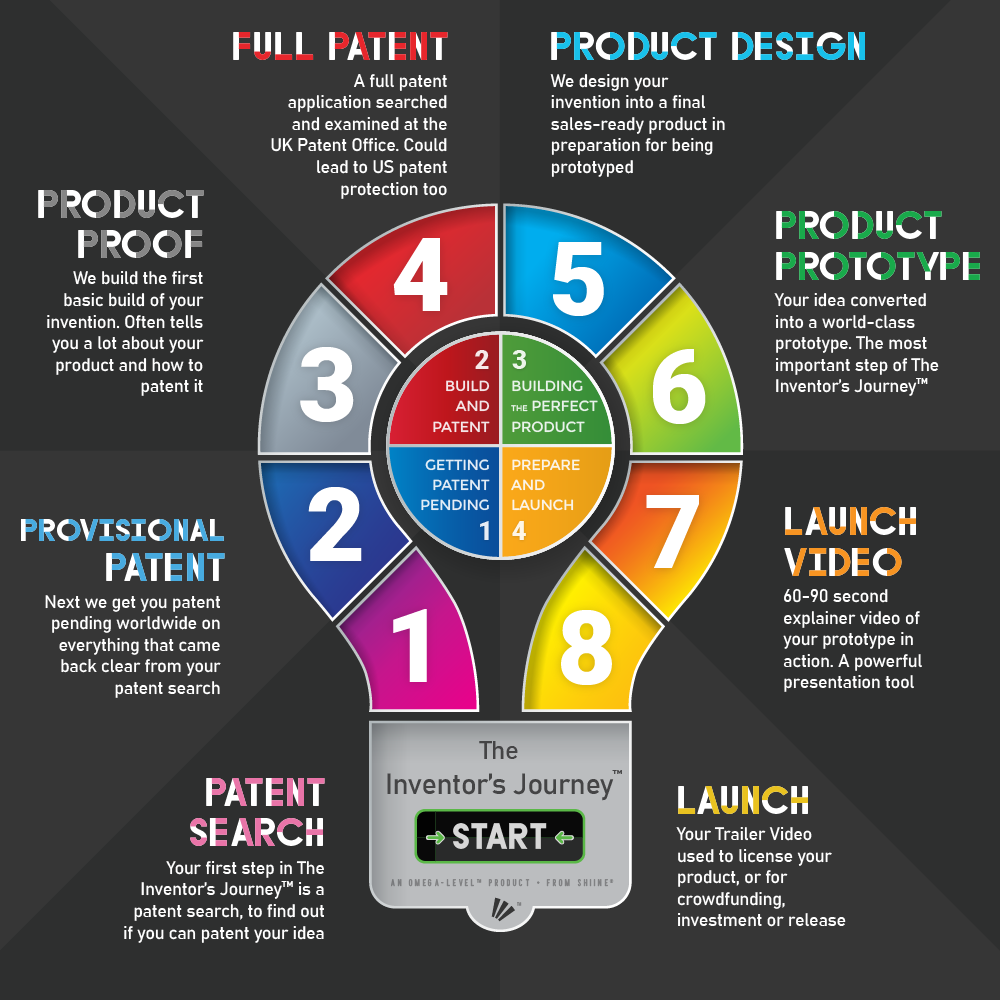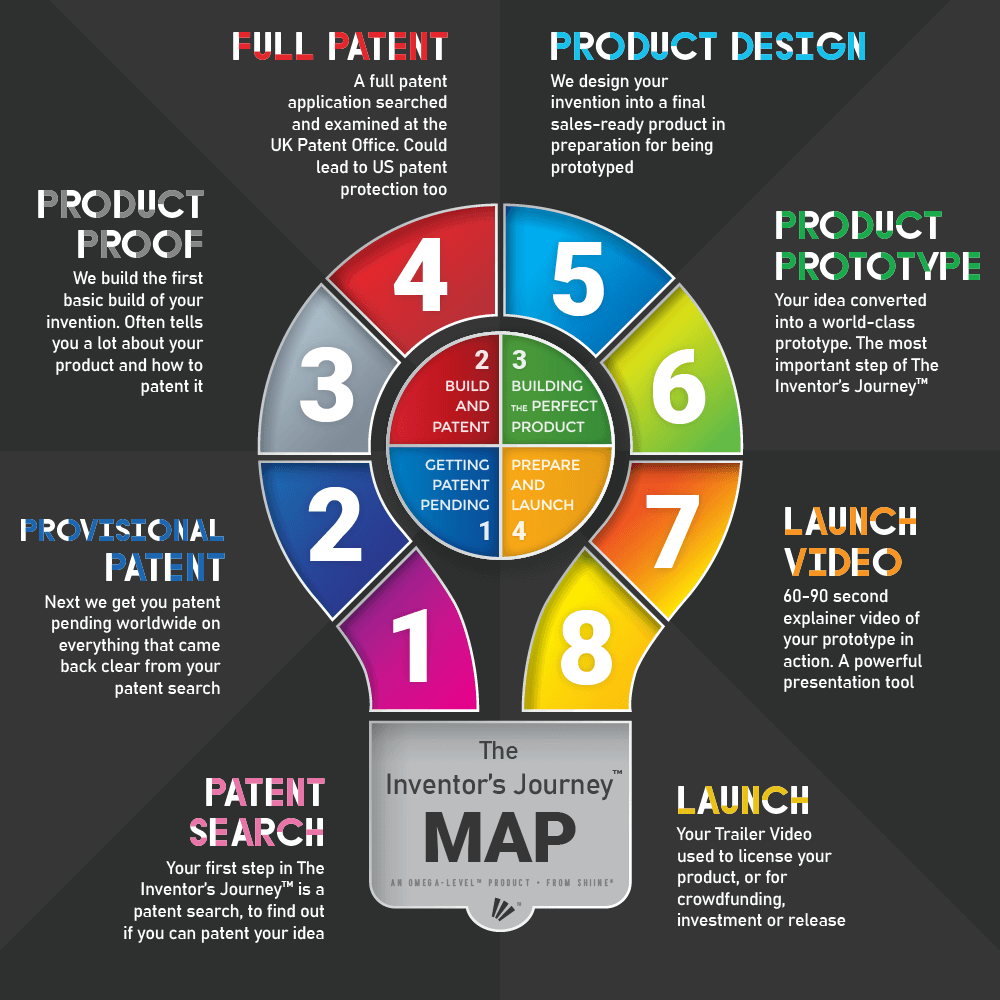

Jethro L Bennett
Inventor, Professional Product Designer, Elite Patent Specialist
Creator of The Inventor's Journey™
Captain of SHIINE® ENTERPRISE
Patenting
Product Development
Launch
Captain's Blog
The 3 Different Types Of USPTO Continuing Patent Applications
So you’ve filed your USPTO non-provisional patent application, and you’re waiting for the offiical results to come through, (or perhaps have your claims allowed and are close to grant). But what if you decide you have ANOTHER invention in your patent application, and you want to claim THAT and get a patent on THAT too? In order to do that, you have to file a CONTINUING patent application.
A continuing patent application is anoher non-provisional patent application, which ‘branches off’ from your non-provisional that you’ve already filed. Let’s take a look at the 3 different types of continuing applications you can file. But first, a couple of rules…
Rules For Filing A Continuing Patent Application
In order to be able to file a continuing patent application, the non-provisional you’re branching it off from must still be LIVE (ie pending). That means it cannot already have gone to grant, and cannot have been abandoned. So if your claims have already been allowed by the USPTO patent office examiner in your current non-provisional patent application, and you’ve paid the issue fee, (ie your patent could go to grant any moment), then if you want to file a continuing patent application, it must be done very soon.
Note:
Rumour has it that you can actually file a continuing patent application on the actual day your previous non-provisional patent application gets granted, even once the letter confirming grant has been issued by the USPTO. But would you want to leave it to the last day like this? I try to get mine filed BEFORE EVEN PAYING THE ISSUE FEE to get the previous patent application to grant. That way, I know I’ve done it within the deadline.
Payment
When you file a continuing patent application, you will have to pay relevant non-provisional patent application fees.
The 3 Types Of Continuing Patent Application
Ok…. Now we’ve got that stuff out of the way, let’s take a look at the 3 different types of continuing patent application. (It’s a lot more simple than it sounds).
Continuation Patent Application
The first, (and most simple), type of continuing patent application is a just called a Continuation Patent Application.
A continuation patent application is just where, having claimed a certain invention in your present non-provisional patent application, you now file a new non-provisional patent application, and without adding anything new to the application, (ie no new content, drawings, text, etc), you just claim something different, but which was already in your present non-provisional patent application.
In other words, you’re not ADDING anything new- you’re just deciding to claim something else, which was already in the previous non-provisional patent application you filed this continuation patent application from.
An example would be my invention Discshine™ (next generation show polisher). In my first USPTO non-provisional patent application for Discshine™, I claimed the unusual sideways mounted motor plus non-central gearing solution, (which allows such a big motor to be in such a low profile device). But I then wanted to also claim the special lighting system that was also disclosed in that patent application. The solution in this situation is to do this: before the first patent application for the sideways mounted motor goes to patent, (ie whilst it’s still live and pending), I file a continuation application, now claiming the lighting system. Solved! Watch this video for clearer explanation:
Divisional Patent Application
The second type of continuing patent application is a Divisional Patent Application.
Here’s the good news- it’s pretty much IDENTICAL to what a continuation patent application is. So it’s exactly the same, in the sense you’re just branching off into a new non-provisional patent application, and claiming something you already had in your previous non-provisional patent application.
The only real difference, (apart from some slight legal differences, eg to do with double patenting, which we will not be going into in this post), is that a divisional, (as opposed to just a continuation), is when the invention that you’re now claiming in this new non-provisional patent application is the exact same as a claim you already filed in your previous patent application, (and which the examiner, in the previous application, deemed to be an invention different enough that you had to ‘choose’ which one to go ahead with in that previous patent application.
When the examiner makes you ‘choose’ in this way, in USPTO terms, this is called an ‘election’, or a ‘restriction requirement’. It happens a little bit more than you might imagine, but we won’t go into it in depth in this post. If you want to know more about it, go to this post about USPTO divisional patent applications.
Continuation-In Part Patent Application
The third type of continuing patent application is a Divisional Patent Application.
This one is a little different from the other two, and a bit ‘special’, because in a continuation-in-part patent application, not only can you retain all the disclosure (ie all the ‘stuff’) in your previous patent application, but you can add new stuff.
This can be incredibly useful, because it allows you to continue the chain of priority from your previous patent application, (allowing you to get the benefit of that early filing date for anything you claim in the new application that was already in the previous patent application), but it also allows you to add potentially important new inventive features/disclosure into your application. (The ‘new stuff’ will only get the new filing date of the new continuation-in-part patent application, but that’s usually not a problem).
Continuation-In-Part patent applications do not exist in UK/European patenting. But my experience, from filing both in the Uk and the US, is that they can be very useful, and provide an elegant solution for how to add new stuff into a family of patent applications, whilst retaining the chain of priority, if needed, from previous patent application(s).
If you want to know more, specifically about continuation-in-part patent applications, this post is specifically about them.
FREE CONSULTATION
At step 1 of The Inventor's Journey™
(PerfectPatent™ Search)
When you become a crew member & Start The Inventor's Journey™
(PerfectPatent™ Search)
When you become a crew member & Start The Inventor's Journey™
FREE
Legal Disclaimer:
No personalised and/or legal advice is provided on this webpage.
Only information and Power is provided.



LightSpeed PerfectPatent™ Package
- Full (non-provisional) patent application drafted and filed at the Patent Office
- Official patent office results in as quick as 18 days after filing

iPatentPending™ (Video Program)
Teaches you how to draft and file your own provisional patent application. Now FREE on the 10 Day Free Trial of The Inventor’s Journey™.



















